Nutrition and Fitness Are Key to Maintaining Balance
Rosa Braga-Mele, MD, MEd, FRCSC
In my experience, we physicians—female physicians in particular—tend to feel guilty about taking time for ourselves. We often prioritize our patients and office and put ourselves last. I have come to believe that taking time for ourselves makes us better at everything we do and helps us avoid burnout. This is why I ensure that a balanced diet and fitness training are a part of every day; both give me energy, increase my productivity, and improve my mental health (Figure 1).

Figure 1. Dr. Braga-Mele ensures she has time to work out every day.
Figure 1 courtesy of Rosa Braga-Mele, MD, MED, FRCSC
NUTRITION
Dietary choices. A diet of 40% proteins, 40% carbohydrates, and 20% fats is generally accepted as well balanced for a man or woman. Many people, however, do not realize how little protein they are eating. A general rule is to eat 1 g of protein daily for every pound of body weight. Protein consumption may be increased to build muscle. Good sources of protein include chicken, fish, lean cuts of steak such as strip loin and sirloin, and pork tenderloin. For those following a vegetarian or vegan diet, beans, legumes, and protein powders are nice options.
A fondness for carbohydrates is natural, particularly when we are under stress. Carbohydrates are the body’s primary source of fuel, but unrefined sugars should not be the main part of our diet. Fruit is a healthy source of carbohydrates; bananas contain a high amount of sugar whereas berries contain a low amount. Carbohydrate intake may be decreased below the 40% recommendation for weight loss. Also, it is important for women to maintain enough healthy fats in their diet to ensure proper hormonal balance. Good choices are cheese, avocados, and natural fats in healthy meat choices. Occasionally, I indulge in dark chocolate, too.
When it comes to nutrition, I follow the 80/20 rule. I make healthy dietary choices 80% of the time and eat whatever I want (within reason) 20% of the time. For example, I may eat healthy foods Monday through Friday and then treat myself to a favorite meal with friends on the weekend. Alcohol is empty calories, so I minimize my intake. I recommend minimizing the consumption of alcohol and unrefined sugars because eliminating them can amplify cravings.
Apps are available for tracking what we eat, but it is easy to get caught up in or overwhelmed by weighing and checking every food eaten. I recalibrate my diet every 3 months by weighing and tracking what I am eating for about 5 days and assessing how much protein I am consuming.
Meals. Some people advocate intermittent fasting with the amount you fast dependent on age (although you should hydrate with water during the fasting time). I prefer to eat six or seven small meals per day. This can be difficult to manage in a busy office. I like to pack a protein yogurt, a sandwich, and nuts; sometimes, I pack a small serving of dark chocolate. The point is to refuel my body and avoid hunger because it can lead to the consumption of a large meal or unrefined sugars.
Hydration. Some people think drinking a few cups of water per day is sufficient, but it is better to aim for about 2 to 3 L. I keep a thermos containing 750 mL of water by my computer at the office and refill it two or three times per day. Proper hydration can help curb hunger and improve cognition and bodily functions.1
THE PERSONAL AND PROFESSIONAL BENEFITS OF A HEALTHY DIET
How it helps me. Reducing the amount of unrefined sugars and unnecessary fats in my diet helps keep my energy level high through the afternoon.
How it helps my patients. It is not my job as an ophthalmologist to counsel patients on their diet, but I can provide useful information in certain situations. For example, I explain to patients with diabetic retinopathy how dietary choices can affect their metabolism and blood sugar levels. Similarly, as someone with arthritis and fibromyalgia, I have learned that certain food groups such as dairy products can incite or aggravate inflammation, and I can share this information with appropriate individuals.
PHYSICAL FITNESS
I am an athlete outside of ophthalmology. I train for bodybuilding and track and field. I spend at least 1 hour every day at the gym or outside running.
In addition to physical development, exercise benefits my mental health. It gives me the time with myself that I need. I find that daily exercise improves my focus and energy in the office and the OR. Resistance training and weightlifting can also increase bone density, reduce the risk of dementia, and jumpstart fat loss.2-7
Weight training also helps with posture and longevity in the OR, specifically for ophthalmologists because they tend to have neck and low back issues. I have found weightlifting/training combats this. Flexibility and stretching exercises are also important.
CONCLUSION
It is important for us to take time for ourselves and refocus our brains on something other than our jobs. This time may take many forms. For me, it is exercise. For others, it may be painting, reading, arts and crafts, or other things. A healthy diet and an hour for ourselves each day can improve the quality of our time with our patients, staff, and families.
1. Water and healthier drinks. Centers for Disease Control and Prevention. Reviewed June 6, 2022. Accessed February 21, 2023. https://www.cdc.gov/healthyweight/healthy_eating/water-and-healthier-drinks.html
2. Westcott W. Resistance training is medicine: effects of strength training on health; Curr Sports Med Rep. 2012;11(4):209-216.
3. Kraemer W, Ratamess N, French D. Resistance training for health and performance. Curr Sports Med Rep. 2002;1(3):165-171.
4. American College of Sports Medicine. American College of Sports Medicine position stand. Progression models in resistance training for healthy adults. Med Sci Sports Exerc. 2009;41(3):687-708.
5. Feigenbaum MS, Pollock ML. Prescription of resistance training for health and disease. Med Sci Sports Exerc. 1999;31(1):38-45.
6. Singh MA, Gates N, Saigal N, et al. The study of mental and resistance training (SMART) study—resistance training and/or cognitive training in mild cognitive impairment: a randomized, double blind, double sham controlled study. J Am Med Dir Assoc. 2014;15(12):873-880.
7. O’Conner PJ, Herring MP, Caravalho A. Mental health benefits of strength training in adults. Am J Lifestyle Med. 2010;4:377-396.
Burnout Prevention: Tips for the Busy Spouse/Parent/Surgeon
David Felsted, DO
I lifted my head as a two-seater Extra-350 aircraft was diving toward the ground at 236 mph. We had just pulled 8g coming out of several maneuvers called the afterburner package. Experiencing airplane gymnastics with the plane tumbling nose over tail was incredible. On the ground, the fresh smell of fuel and exhaust rushed into the cockpit. I was relieved to be done—several rounds of these maneuvers are enough to make you feel sick—but grateful for the ride. One of the pilots shared with me that most people don’t sign up for the afterburner package and those who do are much more prone to motion sickness. I asked, “How do you do this every day?” He smiled and replied, “Oh, you get used to it.”
Sometimes, I wonder if I am living my career in ophthalmology in a similar way—signed up for the advanced aerobatics experience. I enjoy it, but there can be some metaphorical motion sickness. I currently operate 2 to 3 days a week while juggling life as a husband and a father to four kids. Some days, these competing responsibilities can make me feel like I am performing several gravitational somersaults.
During our training, we are taught that “ophthalmologists have higher physician satisfaction, a less stressful work environment, and a generally more favorable lifestyle than practitioners in other medical specialties.”1 I believe this to be true, but I also think the rising generation of surgeons believes ophthalmologists are prone to burnout.
WHAT IS BURNOUT?
Burnout is defined by three stages: feelings of depleted energy or exhaustion, increased mental distance from one’s job or negative feelings towards one’s career, and reduced professional productivity.2
Some studies suggest that the highest rate of burnout occurs among physicians who are in the early stages of their careers. On a broad scale, 76% of US workers have experienced burnout. Only 36% believe their organizations are doing anything to help reduce it.3 The risk of burnout is higher than the divorce rate among physicians (24%) and just as financially catastrophic.4
THREE SAFEGUARDS
Three areas help safeguard me from future flameouts.
No. 1: Time management. My wife, Jennica, and I go over our shared calendar constantly. We keep a well-ironed schedule and block our vacation time 12 months in advance. Scheduling small day trips like the aforementioned aero experience reminds me what all the late nights in residency were for and helps me realize that I’m a father and husband first and an ophthalmologist second. I didn’t schedule the airplane ride for myself; my son chose the activity and let me ride along with him (Figures 2–4). His dreams of becoming a pilot and the dreams of my other children are important to me.
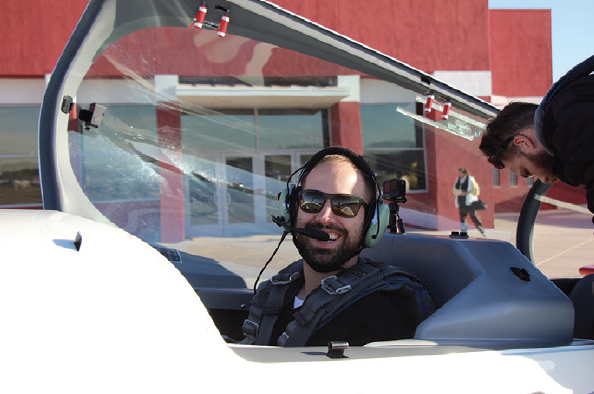
Figure 2. Dr. Felsted in a two-seater Extra-350 aircraft.
Figures 2–4 courtesy of David Felsted, DO

Figure 3. Dr. Felsted’s son Rohen in a small aircraft.
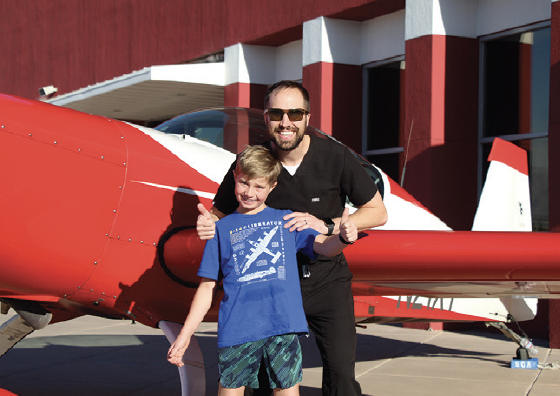
Figure 4. The pair in front of a small aircraft.
No. 2: Physical fitness. Extended time at the microscope everyday increases surgeons’ risk of tight shoulders and cervical injury. Some ophthalmologists I know have required cervical spinal fusion owing to decades of bad ergonomics. Muscle atrophy and sedentary changes are real concerns for young surgeons. Designing and adhering to a fitness plan can help ensure physical longevity. I receive regular therapy for my neck and schedule time for stretching, yoga, and physical fitness every week. I also check my microscope settings every time I’m in the OR and clinic to ensure proper ergonomics.
No. 3: Financial wellness. I have a detailed financial plan. I binged The White Coat Investor podcast series, hired a fee-only financial planner, and ensured I had all the right insurance coverage in place (ie, disability, term life, homeowners, auto, umbrella, and malpractice) before I finished training. I recommend young ophthalmologists save at least 20% of their gross income toward retirement and aggressively pay down any debt. Putting one’s finances in order can translate to better patient outcomes by helping physicians worry less at night about looming payments and more about patient needs.
CONCLUSION
The law of supply and demand favors us young ophthalmologists. We are a prized asset because there simply are not enough surgeons to meet patient demand. We must be willing to say no when necessary and prevent administration and reports from running our lives. We must remember that our relationships with family and friends are our true responsibilities. Everything else will fall into place
1. Sedhom JA, Seibold LK. Physician burnout in ophthalmology. Retina Today. December 2022. Accessed February 7, 2023. https://retinatoday.com/articles/2022-nov-dec-supplement5/physician-burnout-in-ophthalmology-1
2. Morrison C. 16 employee burnout statistics you can’t ignore. EveryoneSocial blog. March 11, 2022. Accessed February 7, 2023. https://everyonesocial.com/blog/employee-burnout-statistics/
3. Study finds 76 of US employees are currently experiencing worker burnout. PR Newswire. December 14, 2020. Accessed February 7, 2023. https://www.prnewswire.com/news-releases/study-finds-76-of-us-employees-are-currently-experiencing-worker-burnout-301191279.html
4. Daily JA. Divorce among physicians and medical trainees. J Am Coll Cardiol. 2019;73(4):521-524.
Finding Ways to Be Kind to Myself
Masara Laginaf, MBBS, BSc(Hons), FRCOphth, CERTLRS
I practice in the United Kingdom, where my training from medical school to completion of ophthalmology training spanned a total of 16 years, 250 square miles, and 10 house moves. Those years were intense, eventful, and mostly joyful. Life did not stop because I was in training, and it took me a while to appreciate that work-life balance ebbs and flows.
I felt a real sense of momentum in the early stages of my career as I progressed from one stage to another. I am now a consultant (attending), and my future has started to take shape, thrusting me into a period of self-reflection. What do I want my life to look like? How do I want to work? How do I want to serve others? I have thought carefully, on many occasions, about the question posed in this article: How do you achieve balance?
The truth is, I have yet to find it. The mistake I have made is thinking balance is something to strive for in the future, knowing full well that life only gets busier and more complex the farther along its trajectory we are. So, what do I do? I strive to enjoy the moment. I make spontaneous plans, play the piano and write songs, visit the theater, travel a lot, and seek out new experiences to enrich my life. In all these things, I endeavor to spend quality time with those who matter to me and bring me joy (Figure 5).

Figure 5. Dr. Laginaf enjoys some time on the slopes.
Figures 5 and 6 courtesy of Masara Laginaf, MBBS, BSc(Hons), FRCOphth, CERTLRS
I learned early in my career that organization is key to creating balance. I plan for the months and year ahead. Having a sense of control over my calendar, taking regular holidays, and making time for important events and conferences helps break up my clinical work (Figure 6) with periods of rest, travel, and learning. These experiences feed the mind, body, and soul and provide a real sense of balance.
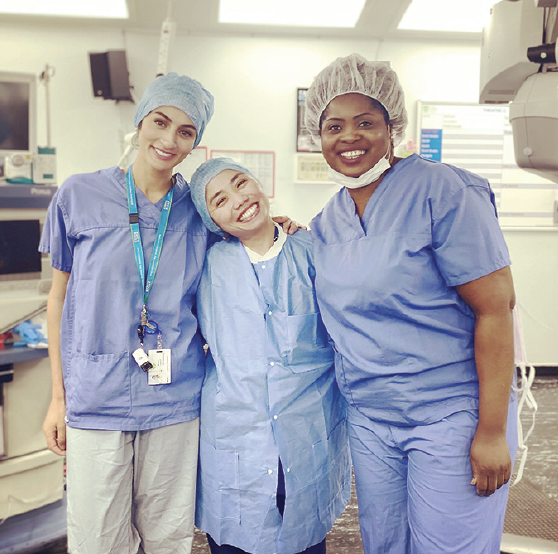
Figure 6. Dr. Laginaf and colleagues in the OR.
Burnout remains an imminent threat, especially for someone with a full-time public sector health care job like mine, where systems and work conditions can be challenging. Over the course of my fellowship, I acquired a mindset that promotes continual growth and development as a clinician. Honing my skills in anterior segment surgery and embarking on a career in refractive surgery have made me appreciate that new challenges and avenues for growth can keep me engaged and provide renewed enthusiasm for my work. This is so important for career longevity and a fulfilling life.
My final thought—and something I am still working on—is to be kind to myself. We cannot be everything to everyone and everywhere all at once. We must accept this, know when to stop and step back, acknowledge our limitations, and learn when to say no. Setting boundaries and delegating responsibilities are some of the greatest skills we can develop in our professional lives. Like any habit, they can be learned.
Integrating Work and Life Requires Thoughtful, Harmonious Choices and Strategies to Maximize Effectiveness, Not Just Efficiency
Rupa Wong, MD
I long ago gave up trying to achieve work-life balance. That is unattainable because no perfect equilibrium between work and life can be achieved—these forces are in constant tension. Instead, I aim to integrate work and life in a way that fulfills my personal and professional needs without causing burnout and emotional exhaustion. This goal is possible. Striving for it has allowed me to maximize my professional success as an ophthalmologist and managing partner of my three-doctor (soon to be four) practice and to be fully present for my three young children (Figures 7–9).
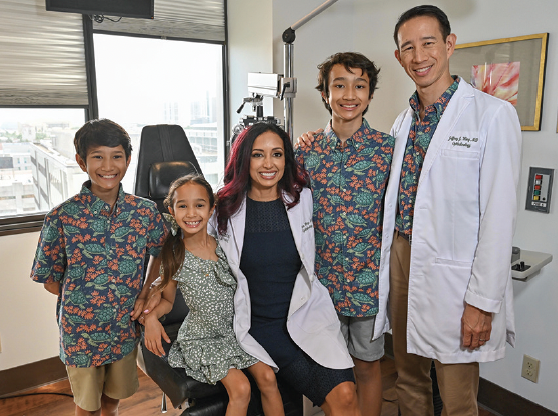
Figure 7. Dr. Wong with her husband, Jeffrey Wong, MD, and their family.
Figures 7–9 courtesy of Rupa Wong, MD
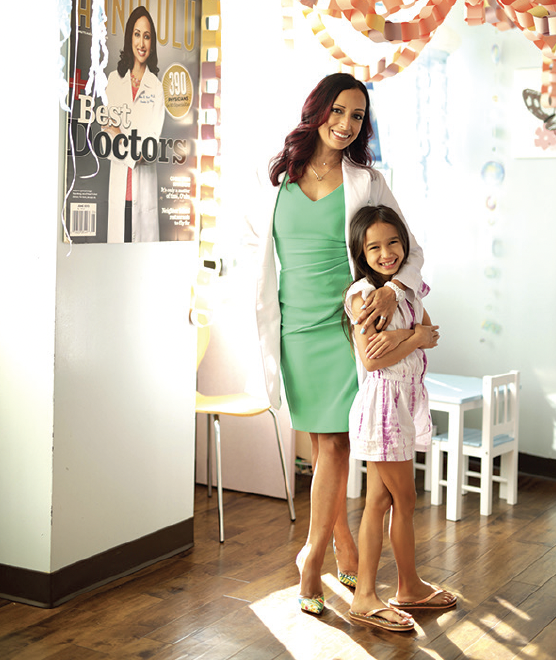
Figure 8. Dr. Wong was selected as one of Honolulu’s Best Doctors.

Figure 9. Drs. Rupa and Jeffrey Wong and their family with their doctors and staff.
My strategies for achieving work-life harmony are not groundbreaking. I am simply crystal clear on several key aspects of my life and never underestimate the importance of my time.
TWO NONNEGOTIABLE STRATEGIES
No. 1: Define your high-leverage work. The term high-leverage work refers to work that only I, with my unique skill set, can do and that yields the greatest rate of return. Whether it is adjustable-suture strabismus surgery, strategizing for my private practice, or helping my children with their homework—these are activities where I cannot be replicated or replaced.
No. 2: Observe the Pareto principle. I strictly observe the Pareto principle. Also known as the 80/20 rule, the Pareto principle holds that 80% of a person’s results come from 20% of their actions. The key is discovering what constitutes that 20% and doing away with or outsourcing the remaining 80%.
This exercise has created a better work-life fit for me, but it is a difficult proposition for many people. Ophthalmologists are used to trying to do it all—study every chapter, do all the research. We falsely believe that if we work harder, put in more hours, and grind harder we can advance. This hustle fallacy sticks with us even when we are done with training. We tell ourselves, “In a year or 2, my practice will be running more smoothly, and I can work less.” We cannot achieve this unless it is a conscious decision.
Yes, observing the Pareto principle involves compromises, but it is possible to be fully present for ourselves and our families without sacrificing our professional success.
I no longer equate time spent with results—either for myself or my staff. Instead, I promote a fluid, flexible approach to maximizing personal and professional success.
Factors to Consider When Negotiating Maternity and Family Leave
Anonymous advice for building a compendium of questions
When I signed a contract for my first job as a fellow, I was so excited about the prospect of no longer being a trainee that I did not give myself time to shift my perspective completely to being an employee. I felt like most of my contract was nonnegotiable, and I did not even think to raise the issue of maternity leave before signing on.
So many factors, however, can make or break your maternity leave experience. I wish someone had offered me the following advice and compendium of questions before I became pregnant. I hope this article empowers you to ask all your necessary questions before you sign your contract.
Maternity and family leave can be tricky, mainly because there are no standardized guidelines from practice to practice. If you’re looking to start a family at any time in the future, know the maternity and family leave laws in your state and consider checking the following factors in your contract:
- Does your practice offer paid leave?
- How long can you take off for both paid and unpaid leave? (Private practices and private equity practices may not cover all your maternity leave, leaving you to use a combination of protected time off, including vacation and sick days and short-term disability.)
- At what point in your employment history is paid leave available?
- Are you expected to cover overhead costs during your time away?
- Who will see your patients when you are out, and are you responsible for hiring a locum?
- Has anyone else in the practice taken maternity or family leave before, and if so, what did it look like?
If you are one of the first people in your practice to take maternity or family leave, you can protect your time off and transition back to work by asking your employer to document your arrangement with official, signed paperwork. In a study of 169 individuals who had taken either maternity or family leave, less than half worked in a setting that had a leave policy. About the same percentage felt that the information they received from their employer was inadequate.1
If you practice in an academic institution, it is important to know if your employer has a stop-the-clock policy for tenure-track positions. If it does, find out the requirements to qualify, how long the stoppage lasts, and if there a set number of times the policy can be invoked.2 Some private practices may offer a pause on partnership track review for leave, but it seems to be rare.3
Before you take maternity leave, ask yourself the following questions:
- Do I want to stop taking call or performing surgeries for a certain period before I deliver?
- What kind of childcare services will I need upon my return to work (eg, nanny vs day care), and how long do I need to navigate the day care waiting lists and nanny interviews?
- Do I want to return to work full time immediately or transition back into practice?
- For those who plan to breastfeed, will my office accommodate the time (ie, block off appointment slots) and space for pumping, or do I feel comfortable using a portable breast pump while seeing patients?
- Can I prefill my schedule and/or block off OR days for my return? (It can be easy to lose surgical time, especially if you do not own your ambulatory surgery center.)
Lastly, check to see if a precedent for leave has been set by other colleagues—even male colleagues! If a senior male physician has taken leave to recover from surgery, did he get the same OR time back upon his return? It’s important to build a compendium of these and other questions before maternity or family leave is imminent so that you can be well prepared. It can also help create a template for future generations of clinicians to build upon.
1. Daly CM, Kraus CL, Campbell AA, Kaleem MA, Garg Shukla A, McGlumphy EJ. Maternity and family leave experiences among female ophthalmologists. medRxiv. October 30, 2022. Accessed February 14, 2023. https://www.medrxiv.org/content/10.1101/2022.10.26.22281580v1.full-text
2. Haller JA. Clock is still ticking on stop-the-clock policies. JAMA Ophthalmol. 2023;141(1):31-32.
3. Kalra K, Delaney TV, Dagi Glass LR. Perceptions of parental leave among ophthalmologists. JAMA Ophthalmol. 2023;141(1):24-31.




